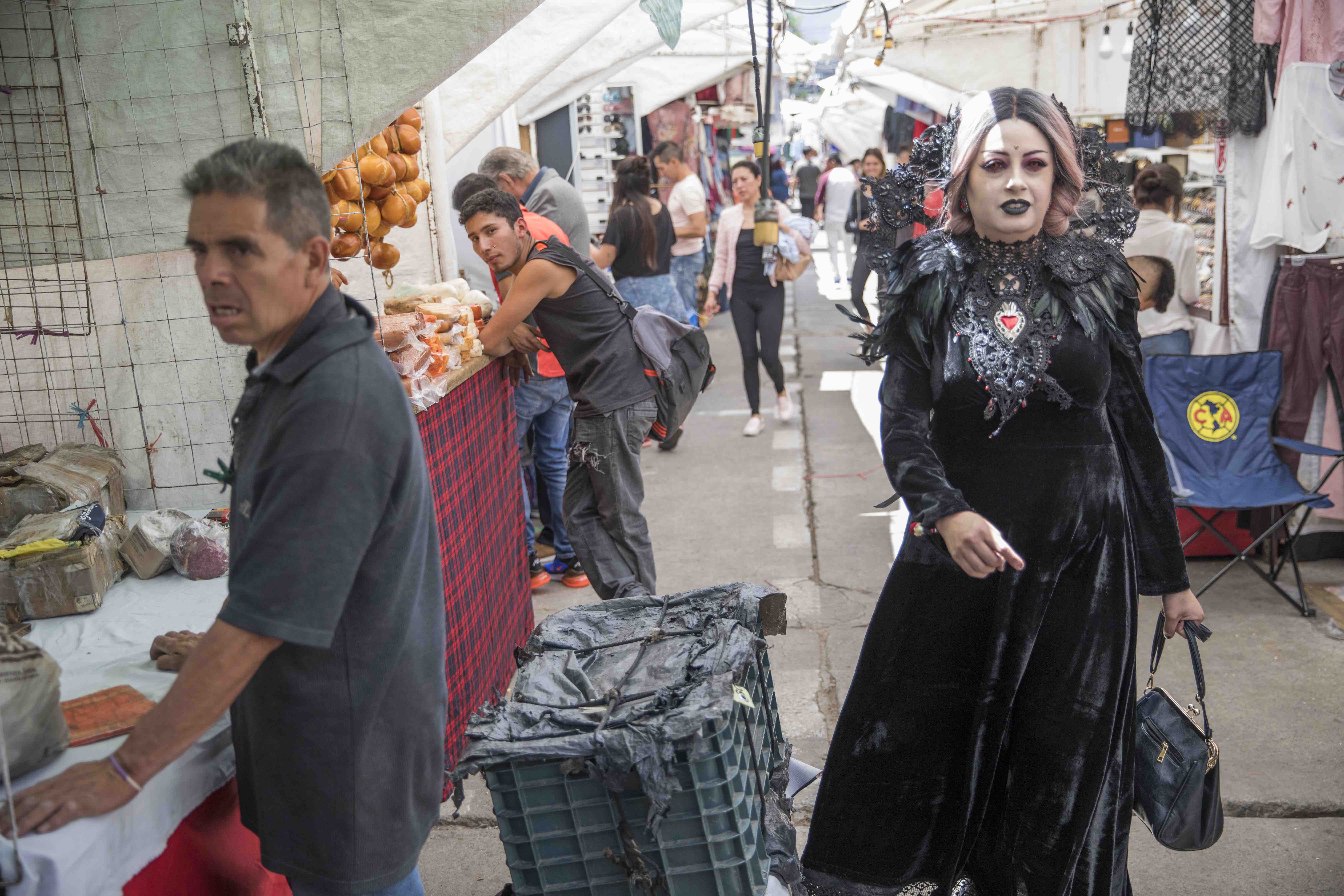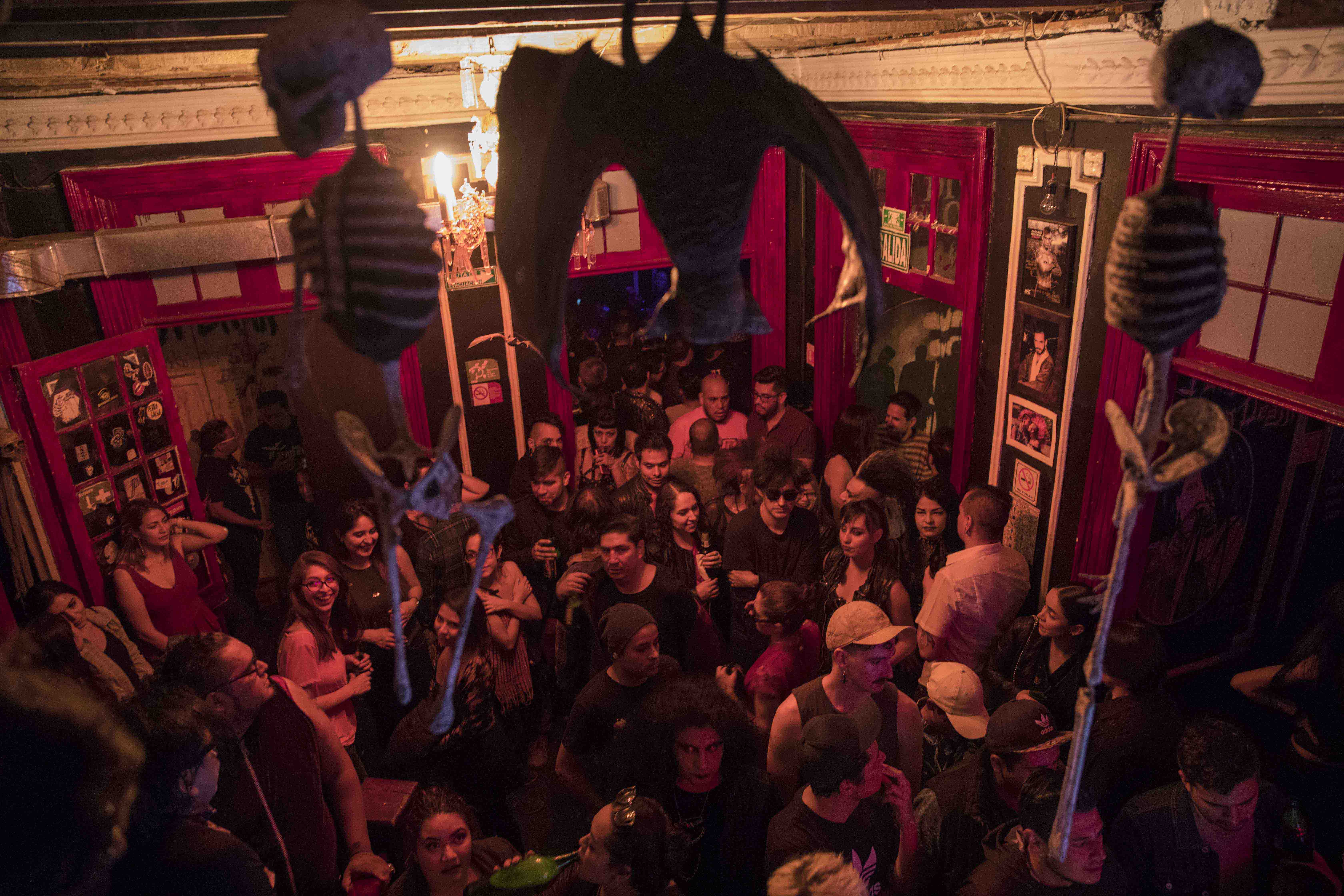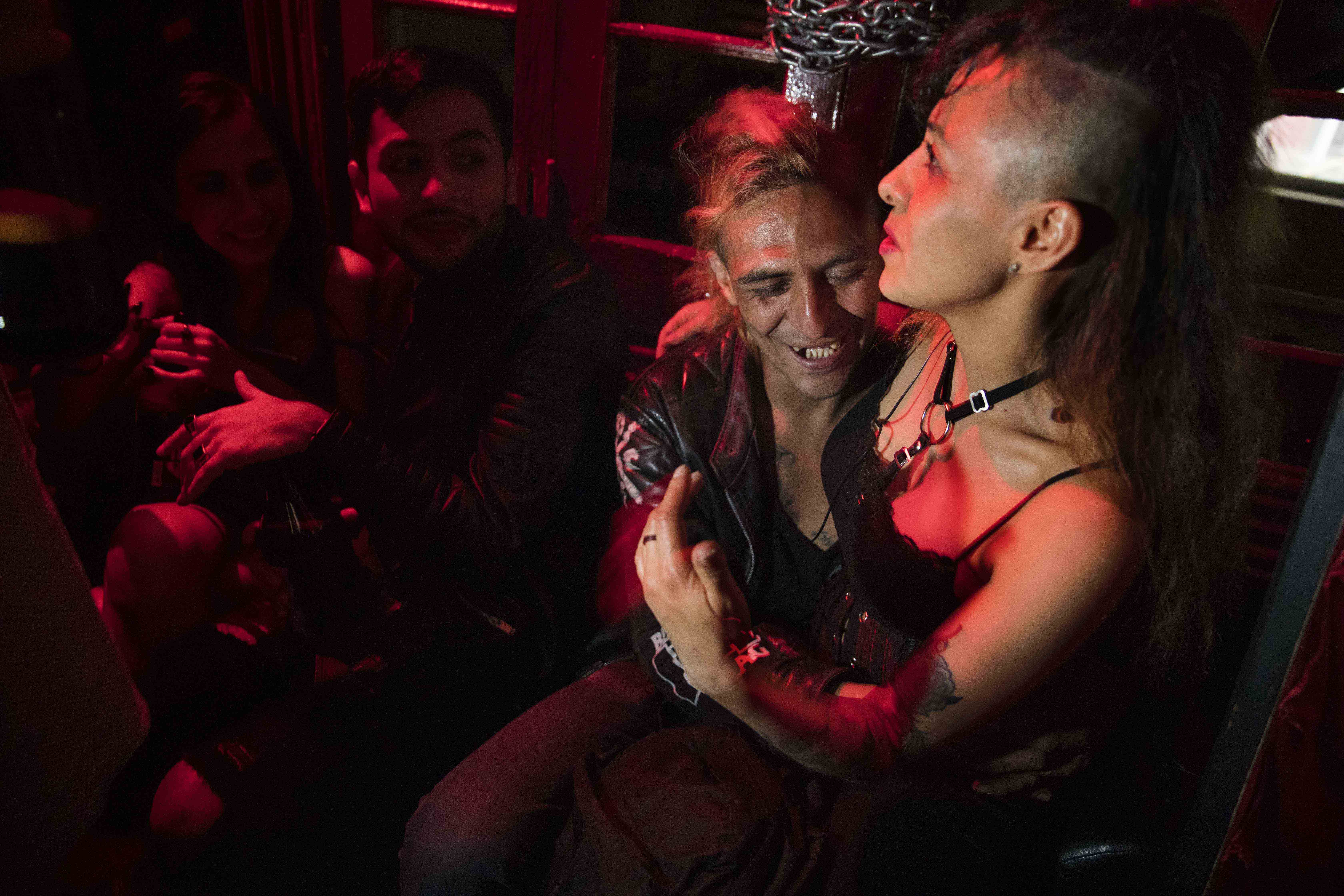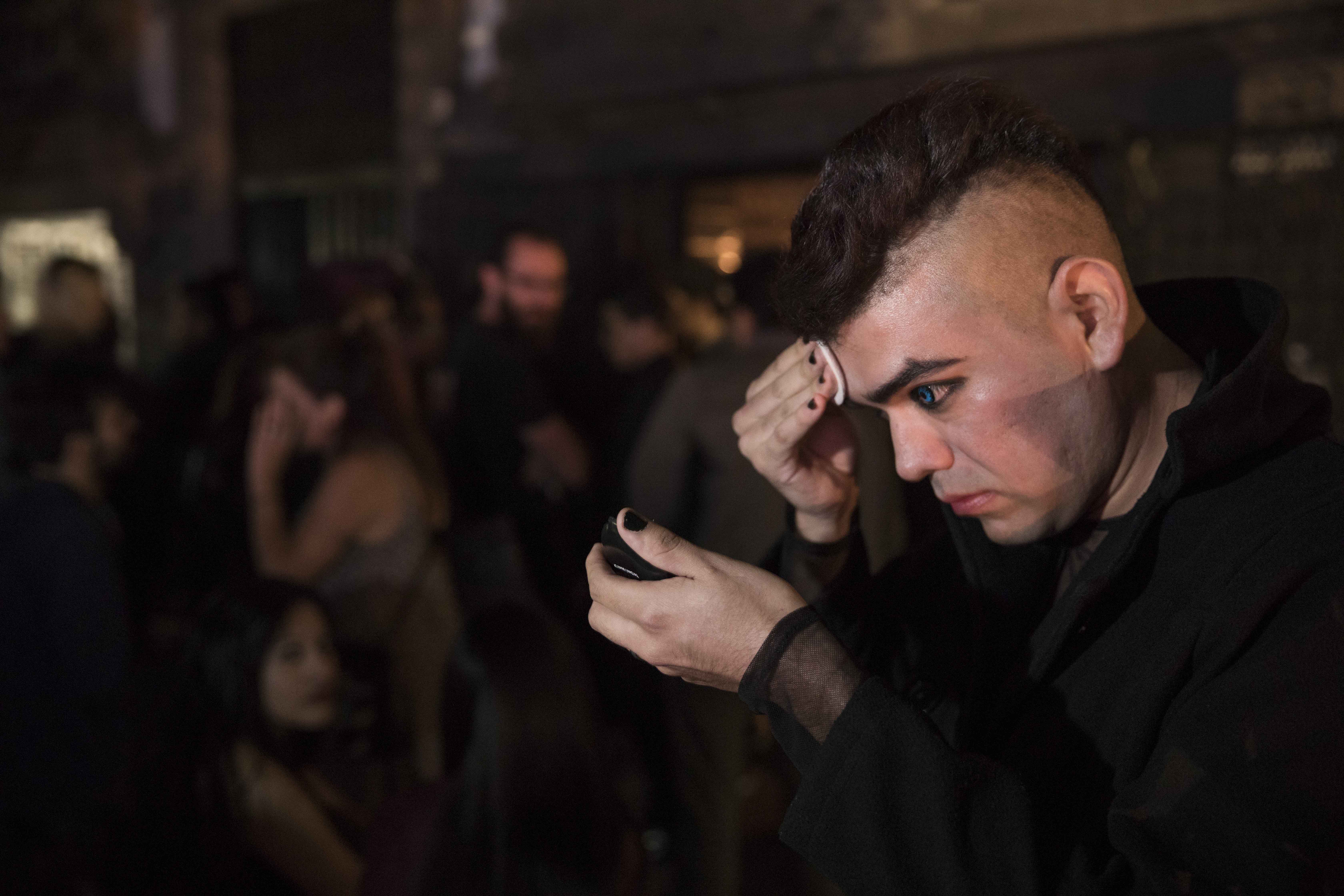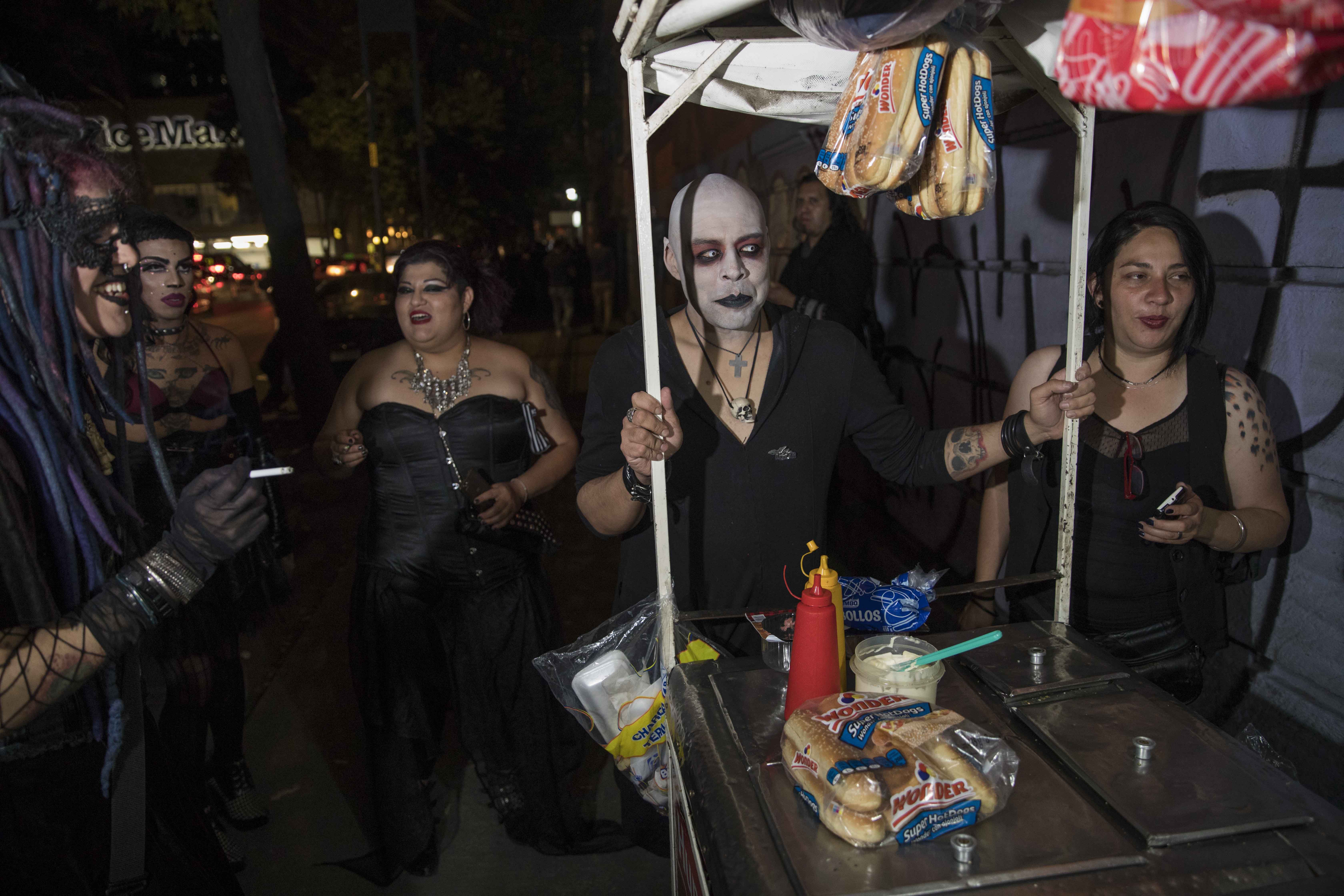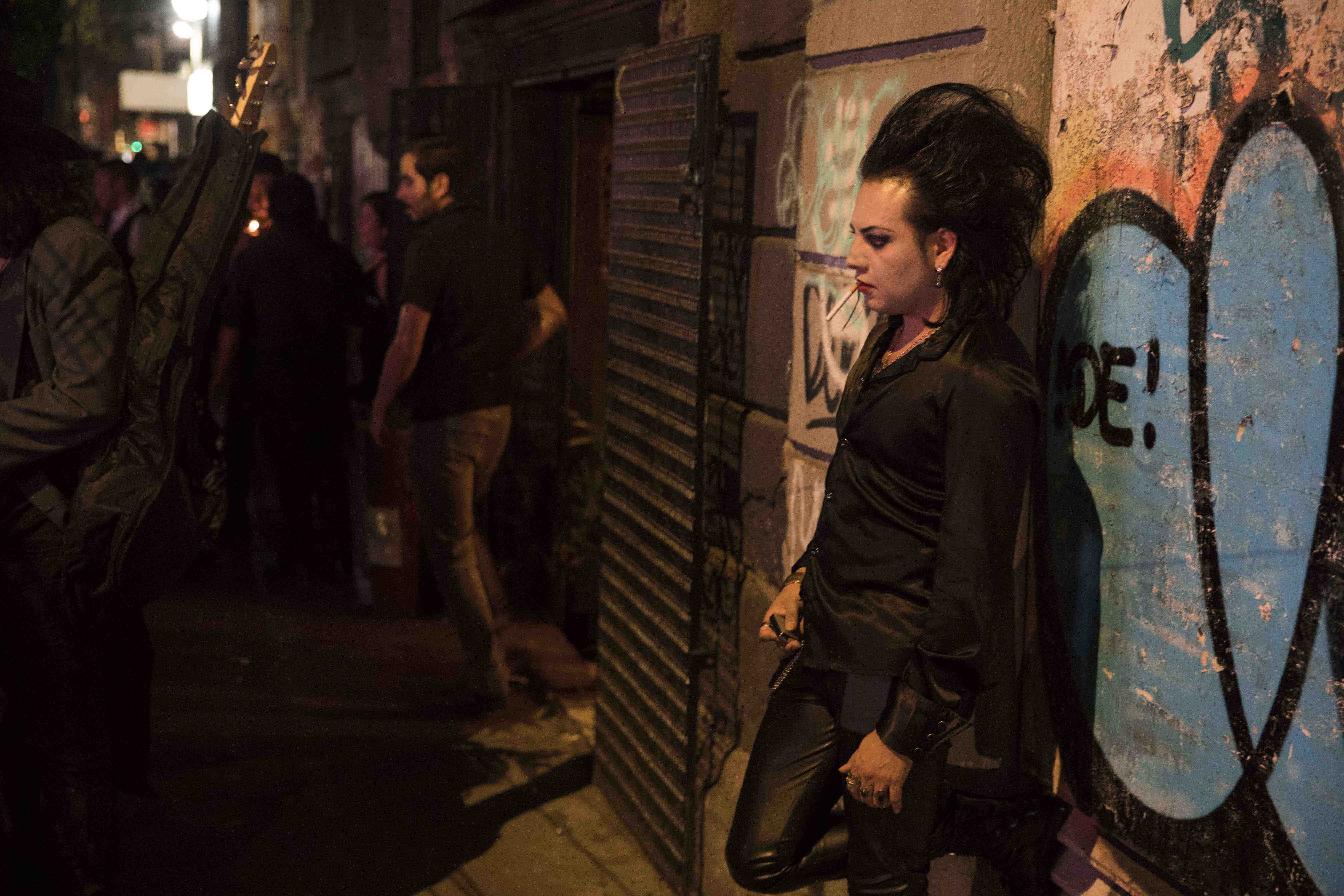The word Chilangoth is two words combined: Chilango, the demonym for Mexico City, and Goth. The term is best translated as Goths of Mexico City.
The first goths in Mexico City wore a sophisticated attire, likely an investment funded straight from their parents’ pocketbooks. They were idle youth from Mexico City’s middle class, resentful of the lack of attention typical of professional parents who spent little time with them. The dark sub-cultures multiplied during the end of the eighties. They bore their paraphernalia in a permanent tribute to unease, without any social, political or ideological struggle to get in the way.
The Chilangoth of today, first generation heirs to glam-rock, goth, punk and emo, spend their time at Chopo Market, the dark tribes’ historic venue in our capital. There, and at nightclubs like The Under and Centro de Salud, they are joined by a drunk or two; some reggaetoneros; an old biker with a sultry tattooed girlfriend; an angry young man who takes a hit and dances ‘til dawn; a surviving emo, half-smiling, eternal sadness reflected in his eyes; a vampire transvestite who cannot decide if she dresses to hide or to reveal; or an easy-going hipster, there out of curiosity. The Chilangoth world makes for a tolerant and eclectic universe.
Today the Chilangoth enjoy post–punk, metal and trash metal, as well as industrial rock, heavy electronic and of course, goth. They favor the old bands like The Cure, The Pixies, Siouxsie and The Banshees, Stereolab, Sepultura, although they also enjoy The Eurythmics, Depeche Mode or Joy Division. A few years ago they were obsessed with Placebo’s dark and preppy Brit-pop, a band they adored ad nauseum. However, the first goth sub-cultures of the eighties were true melomaniacs. Passionate arguments about music were held at the Chopo Market. One could buy recordings there that couldn’t be found anywhere else in Mexico. Vendors would go to Europe and the United States and bring back vinyl, later CDs, of cult groups and soloists who were descendants of punk. There were bands like The Legendary Pink Dots, Tuxedomoon, Tones on Tail, The Durutti Column, This Mortal Coil, The Chameleons, Einstürzende Neubauten, and Fields of the Nephilim, among other delicacies that were never part of the commercial scene.
What the Chilangoth may not care to know is that an 18-year-old girl founded Gothic romantic literature, and that its historic roots spread from Cologne to the heart of Mexico City, where her dark character, unique by definition, stands proudly waving its black flag. That black cloud has expanded its scope through time, and continues to cast a shadow on the harmonious and garish urban subcultures that meet up peacefully at night to trade in a fondness for music, fashion, drugs. They share unstable emotions, throbbing wounds, catastrophic jealousies, and contained intensities that breathe life into their sickly faces.
Introduction by Rowena Bali (translated by Katy Van Sant)
Contributor
Kike Arnal is a photographer and videographer. His photos have appeared in the New York Times, National Geographic and Mother Jones, as well as numerous exhibitions. His latest book, Bordered Lives, focuses on transgender culture in Mexico.


